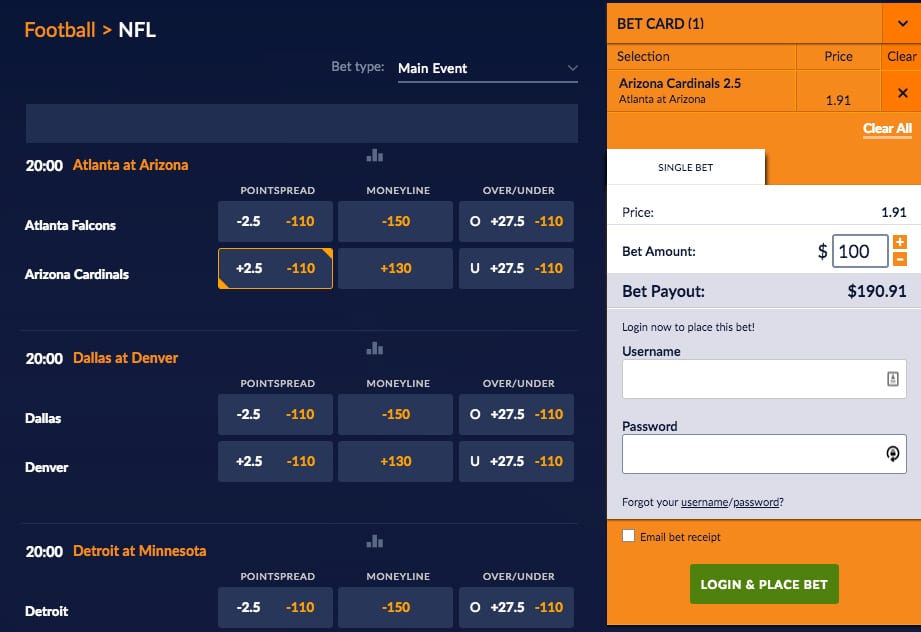What Does Over Under Mean In Gambling
While not as popular as betting against the point spread in sports gambling, betting the “over/under” isn’t that far behind. Sometimes you may see this as O/U, over-under, over under or simply referred to as “the over” or “the under.”
MMA Over and Under Bets. If you’ve ever heard of over/under bets before, these are going to seem fairly similar. In a basketball game, you would typically bet on if the number of points scored by both teams was over or under a certain amount. This would be the same for football as well as most other sports. Combat sports, like MMA, are. Over/under bets. Even though Totals and Over/Under may be used interchangeably for scoring, there’s another way to make Over/Under bets. An Over/Under bet can also be a proposition bet where there’s a wager made on a specific occurrence. A boxing match is a good example since scoring isn’t quite the same as the major sports.
What Does Over Under Mean In Gambling Odds
What does over under mean in betting?
Simply stated, it is the total of the points scored by both teams. While all sports employ an over/under betting option, by far the most money wagered on this bet is in football and basketball. Sports like baseball and hockey offer over/under options, but the vast majority of bets on those sports in based on the established “money line” to pick a winner at a set price.
Unlike a point spread bet in which you are aligning yourself with one team, you’re betting on both teams – either their offenses or the defenses – when betting the over/under. Sports books set over/under scores on games based upon numerous factors.
In the NFL, most over/under scores are set in the low-to-mid 40s.In college football, over/under scores are usually in the high-40 to low 50s – in the Big 12, the land that defense forgot, it can hit the 60s.In the NBA, a typical over/under tends to hover in the 210 range. In college basketball, a standard over/under is between 140 and 155.The hidden factors that come into play in determining a point spread vary by sport, but have common themes. Recent team history is a primary factor that sports books like to exploit. Sports by their nature are a reflective business based on developing trends from previous games (“getting on a roll”) and, if a football team has scored 40-plus points in three straight games, the over/under is going to be higher because sports bettors tend to believe that trends are going to continue. It’s human nature…until they don’t.
If a critical player – a quarterback in football or a dominant scorer in basketball – is out or playing injured, the over/under will drop.
Other factors critical in setting the over/under number include weather (where applicable), an undefinable history between teams (you know Steelers-Ravens games are going to be physical bloodbaths) and injuries that may not jump out to casual fans that mean a lot sports books are all factors that go into creating and setting an over/under line that will draw an even number of fans to both sides of the number.

The key to betting the over/under is to look at a slate of games without knowing what the over/under is and set what you believe it should be based on your knowledge of those two teams. The ones that differ the most from what you think should be are the ones to place your bets on.
One final note that has been a mantra of those who bet the over/under with some consistency – every game is under until it goes over.
If you’re new to sports betting, start with picking and choosing games you’re convinced should go under and get an understanding of how late-game fireworks can botch your plans.
An over–under or over/under (O/U) bet is a wager in which a sportsbook will predict a number for a statistic in a given game[1] (usually the combined score of the two teams), and bettors wager that the actual number in the game will be either higher or lower than that number.[2][3] For example, in Super Bowl XXXIX, most Las Vegascasinos set the over–under for the score of the game at 46.0. A bettor could wager that the combined score of the two teams would be either more than or less than that number. Since the combined score of that game was 45, anyone who had bet on 'under' won.
Initial and final value[edit]
The goal of a sportsbook is to have an equal value of bets on both sides of the over–under. In theory, this means that the manager could set the value at zero and then re-adjust based on either the number of incoming bets and/or events that influence the potential outcome. In practice, the initial value is based on both quantitative (e.g. win–loss record, average points per game, etc.) and anecdotal information (e.g. media reports, injury status of players, etc.).
As with other types of bets where the odds of either outcome are meant to be even, the vigorish (or 'vig') is typically set at or about 5% of the total wager. Using American odds, this will result in both outcomes initially being quoted at -110 (i.e. bettors must risk $110 to win $100). If the amount bet on both outcomes is exactly even, using such odds would result in the sportsbook earning $5 in gross profit for every $110 wagered.
What Does Over/under 1.5 Mean In Betting
Of course, bettors will not necessarily risk the same amount of money on both outcomes every time. In such circumstances, there are two ways a sportsbook can mitigate the risk. The first is to adjust the O/U while keeping the odds of both at -110. For example, if the O/U for a football game is set at 45.5 and the action heavily favors the 'over' then the O/U could be adjusted to 46.5 to encourage bettors to take the 'under.' The risk here is that the sportsbook could lose a lot of money by being 'middled' - using the aforementioned example, if the final combined score is 46 then the sportsbook would be obligated to pay both the initial bettors who bet 'over' and the later bettors who bet 'under.'
The other method to mitigate risk is to adjust the odds on the initial O/U, which is slightly more complicated but eliminates the risk of being 'middled.' In the aforementioned example, the 'under' could be adjusted to -105 while the 'over' is changed to -115 (meaning bettors would have to risk $105 and $115 respectively to win $100) in order to make the original 'under' proposition more attractive (and the 'over' less so) to bettors. In actual scenarios, even adjustments of -100 (i.e. 'even money') and -120 are common place as sportsbooks typically endeavor to maintain steady margins and minimize risk.
Statistics[edit]
Though this bet is most commonly made with the combined score of the two teams, many other statistics can be used, including:
- In American football, a player's or team's total rushingyards or attempts, down conversions (first or third), interceptions, completions, field goal percentage, etc.
- In basketball, a player's or team's total assists, blocks, turnovers, steals, etc.
- In baseball, a player's or team's total number of home runs, RBIs, etc.
Dice[edit]
A variant of overunder betting, known as Under Over, is a dice game played at various festivals. The object of the game is to predict whether the dice will roll to a total of under 7, over 7, or at 7. The game is typically played with 2 dice.
A player typically places a wager on one of three spaces. These spaces are:

- Under 7 (usually pays 1–1)
- Over 7 (usually pays 1–1)
- 7 (usually pays 4–1)
For instance if one bets one dollar on under and the dealer rolls under, they gain a dollar as well as get their dollar back. If the dealer rolls a seven and one bets on it, they make four dollars. Once all the bets have been placed the attendant closes the betting board with a screen and then puts the dice through the chute. Players then get paid accordingly.
One variation of Under Over involves foam dice, two of which are thrown in the middle of the players; in another variation, two balls are thrown into a giant wheel consisting of twelve spaces of numbers ranging from 1–6. No wire fence is used to block the bets in that case.
What Does Over Under Mean When Betting
References[edit]
- ^Kochan, M. (2013). Secrets of Professional Sports Betting. Cardoza Publishing. p. 12. ISBN978-1-58042-438-7. Retrieved April 25, 2015.
- ^Williams, L.V.; Siegel, D.S. (2014). The Oxford Handbook of the Economics of Gambling. Oxford Handbooks in Economics Series. OUP USA. p. 205. ISBN978-0-19-979791-2.
- ^Fodor's Las Vegas 2015. Full-color Travel Guide. Fodor's Travel Publications. 2014. ISBN978-0-8041-4300-4.